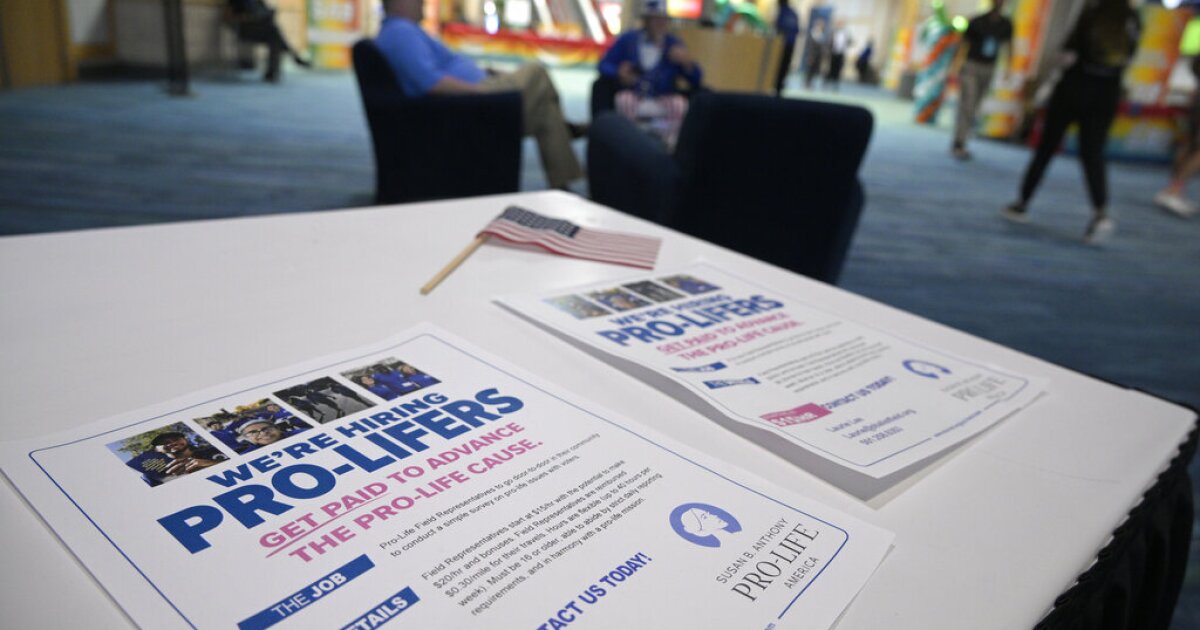

Midterm election setbacks for the anti-abortion movement are driving advocacy groups to reevaluate how they engage with voters and advance goals in the post-Roe v. Wade era.
Anti-abortion groups acknowledged they are struggling to figure out how to approach ballot initiatives in elections after measures in California
, Michigan, Vermont, Kentucky, and Montana fared well in protecting abortion rights. They took special note of the financial challenges they faced.
DOCTORS ASK BIDEN TO DECLARE EMERGENCY OVER RSV SURGE AMONG CHILDREN
“I wish that we could move away from ballot initiatives. I don’t think they’re gonna serve us well. They’re very expensive and very confusing, but I think that they’re here to stay,” said Jeanne Mancini, president of March for Life. “So we’ve got to kind of rethink our approach or strategy.”
Mancini emphasized that anti-abortion groups were greatly outspent by their opponents in ballot initiative campaigns, adding that she believes it complicated their efforts to reach voters to shut down claims made by the other side.
“There’s no lack of work to be done in a way of educating,” Mancini argued. “There’s a lot of disinformation out there about what the pro-life movement is about, which is love, which is for the mother, for the baby, and what we stand for.”
Marilyn Musgrave, vice president of governmental affairs for Susan B. Anthony Pro-Life America, said abortion rights opponents will need to step up their fundraising efforts.
“The pro-life side has got to raise money and really get on offense on these, but I will say it is extremely difficult to counter these ballot initiatives. Money, resources, the other side has so much more,” Musgrave said.
Patrick Brown, a fellow at the Ethics and Public Policy Center, said the midterm results should be a “wake-up call” to abortion rights opponents that they need to change their strategy following the Supreme Court decision in Dobbs v. Jackson Women’s Health Organization this June that found there is no constitutional right to abortion.
“I think that’s the red light flashing on the dashboard for pro-lifers that status quo post-Dobbs isn’t gonna be good enough, but it’s not to say the whole picture is weak. There’s definitely signs of hope that there are pro-life politicians that can move the ball forward,” said Brown, noting Republican congressional and gubernatorial candidates’ wins
.
Anti-abortion groups have signaled that they need to make it clearer to voters what they are advocating, though there does not appear to be a consensus about what that position is, as groups have noted that abortion restrictions are likely to appear different on a state-by-state basis.
“Ever since the Dobbs decision was handed down, pro-lifers as a whole have been trying to reassess where our focus should be, where our priorities should be. Certainly 50 years trying to overturn Roe vs. Wade, you know, it was a monumental battle and in some respects just got us to the starting line,” said Brown.
CLICK HERE TO READ MORE FROM THE WASHINGTON EXAMINER
Meanwhile, abortion rights groups have signaled that ballot initiatives could be a viable option to put the issue before voters, especially in Republican-led states where abortion rights legislation would not pass the legislature.
“Until there is national legislation that protects abortion rights across the country, we will continue to work to ensure that state constitutions protect the right to abortion,” said Nancy Northup, CEO of the Center for Reproductive Rights.





